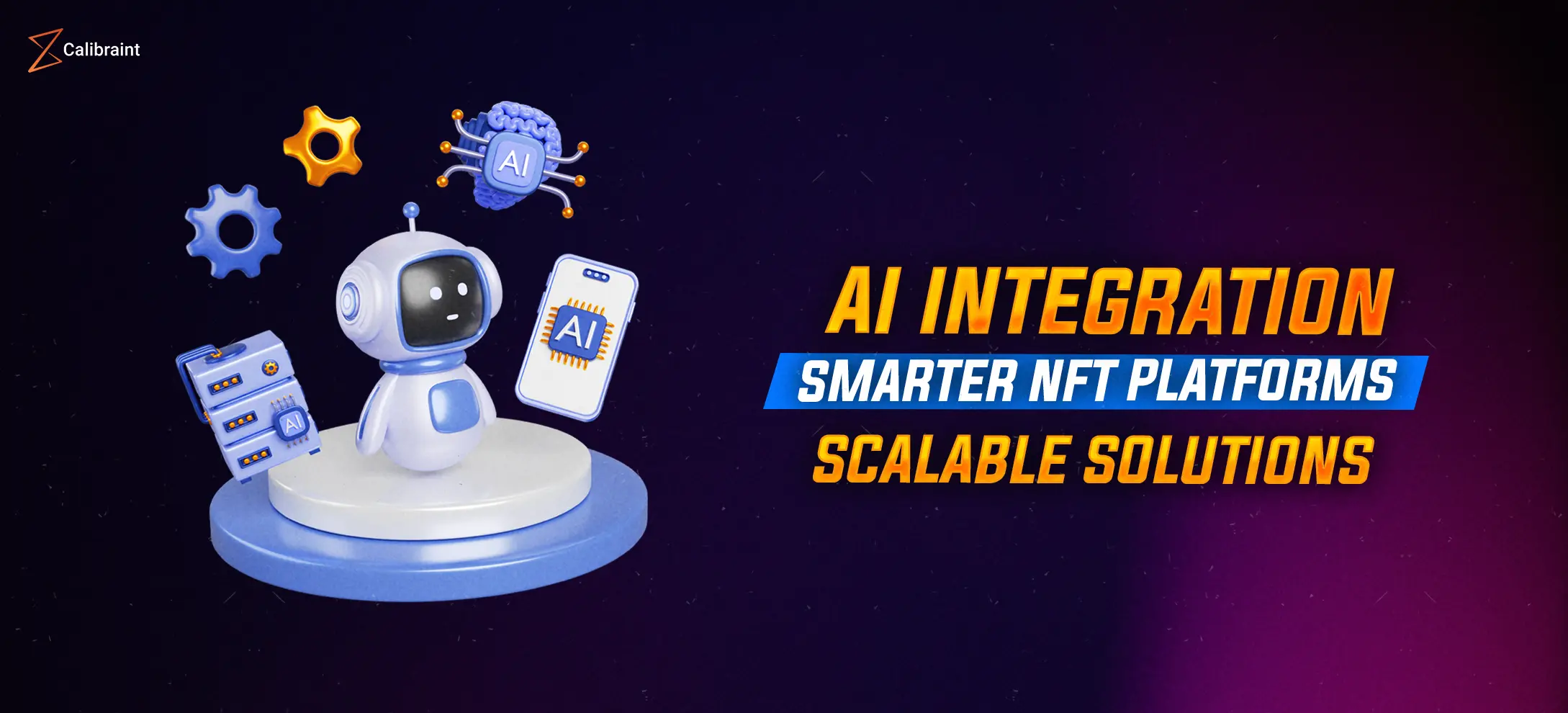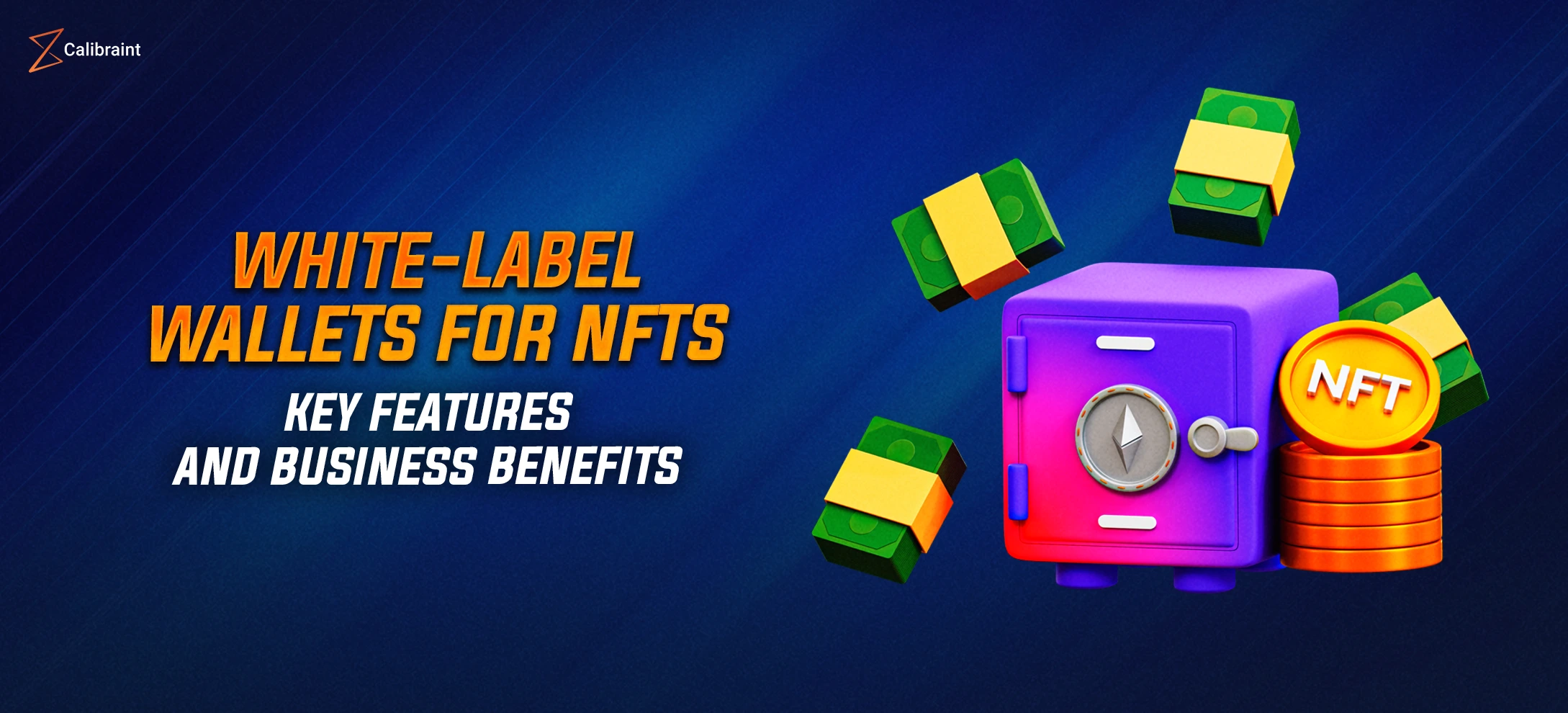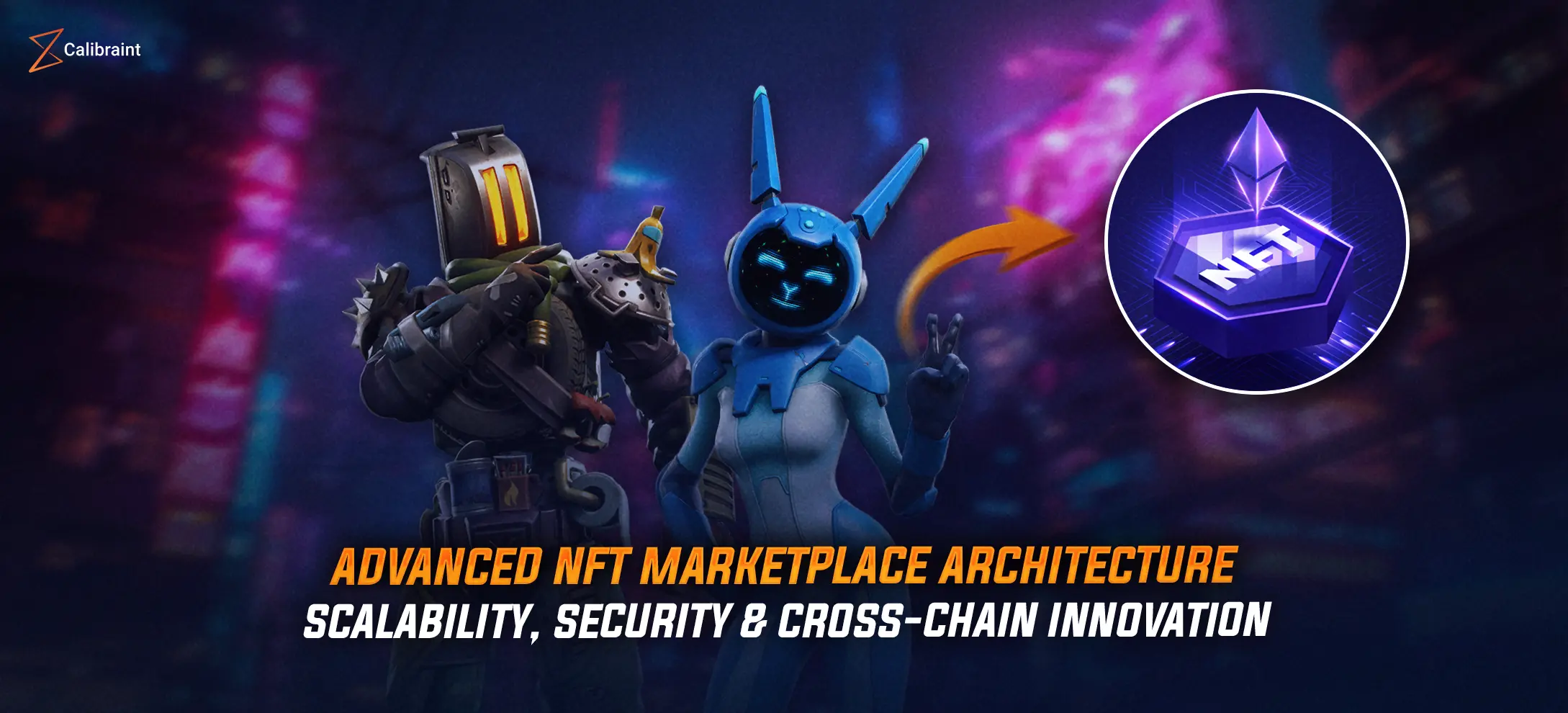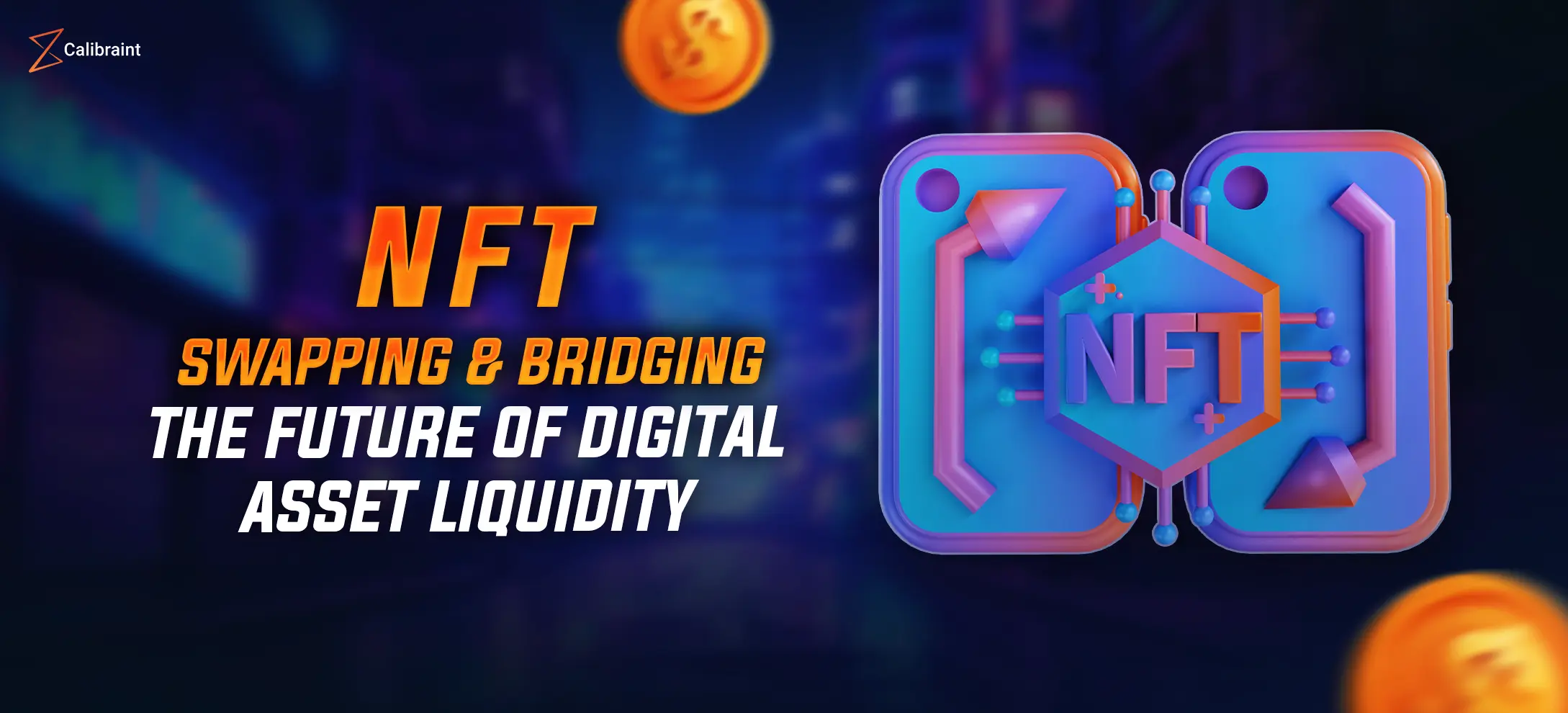NFT Marketplace Economic Models Royalties Rewards and Governance Logic
Calibraint
Author
November 5, 2025
Last updated: November 14, 2025
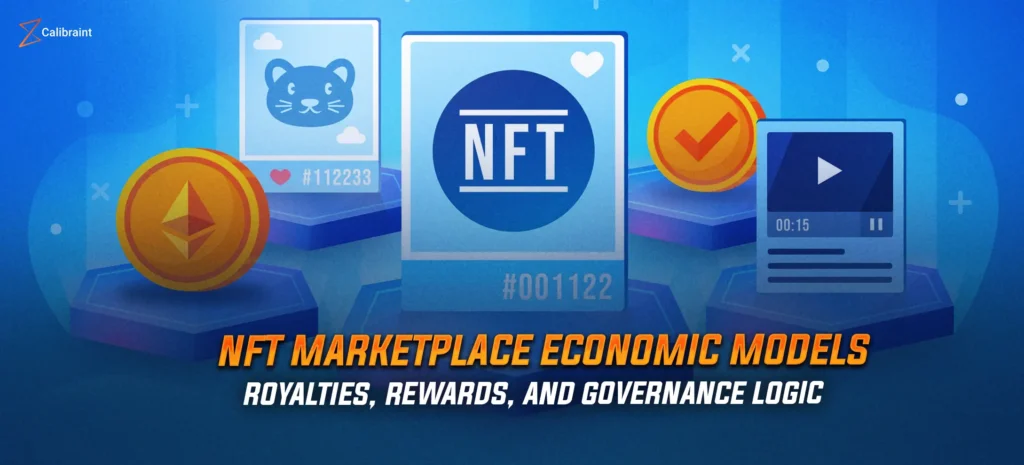
You are currently facing a critical inflection point. The hype surrounding Non-Fungible Tokens (NFTs) has faded, clearing the landscape for sustainable, enterprise-grade digital asset platforms. This is no longer about speculative JPEGs; it’s about tokenizing real-world value, establishing verifiable supply chains, and unlocking entirely new forms of customer engagement and fractional ownership. We agree that the initial volatility of the NFT market has been a distraction, but the core blockchain technology it introduced remains a paradigm-shifting force for business.
The real challenge for senior decision-makers like you is not if to adopt this technology, but how to construct a robust NFT marketplace platform that moves beyond simple transaction fees to create a self-sustaining digital economy. A platform that genuinely aligns the interests of your enterprise, your creators, and your community.
The Promise: By the end of this deep-dive, you will possess a strategic framework, backed by competitor insights and market data, to architect a future-proof NFT marketplace platform, one built on innovative economic models, transparent governance, and genuine creator incentives. This blueprint will educate your team and be the catalyst for launching your next-generation digital ecosystem, designed explicitly to convert strategic vision into tangible ROI.
A Market in Transition: The Data Demands a Pivot
The global NFT market is projected to reach approximately $2.37 billion in 2024, with a compound annual growth rate (CAGR) of 9.10% through 2028. Critically, dedicated NFT marketplace platform models are expected to capture over 40% of the market share by 2035, growing at a rapid CAGR of over 35%. This growth is not from mass-market art but from enterprise applications in gaming, real estate, and digital luxury. Traditional transaction-fee models are hitting a ceiling, forcing a necessary evolution into sophisticated, multi-layered economic engines.
To architect platforms ready for this new era, enterprises are increasingly prioritizing modular, scalable, and security-first system structures. You can explore a full technical breakdown of advanced NFT marketplace architecture to understand how modern platforms are engineered to support real-world tokenization and enterprise-grade digital asset management.
This article will preview four mission-critical pillars for a high-value NFT marketplace platform:
- The New Revenue Equation: Moving beyond simple transaction cuts.
- The Creator-First Mandate: Architecting immutable NFT creator royalties.
- Incentivizing Loyalty: The strategic logic of NFT staking rewards.
- Decentralized Strategy: Implementing blockchain governance tokens.
1. The New Revenue Equation: Beyond Transaction Fees
For a high-stakes enterprise project, a 2.5% platform fee is simply not a defensible or scalable long-term revenue model. Competitor analysis reveals that leading platforms are already diversifying their marketplace revenue model. Your NFT marketplace platform must be engineered with multiple, interlocking revenue streams.
Architecting a Robust Marketplace Revenue Model
- Tiered Premium Services: Offer specialized tools for enterprise-level creators—think advanced analytics dashboards, white-glove listing services, or API access for integrating your NFT marketplace platform directly into a CRM or ERP. These could operate on a high-value subscription model.
- Initial Setup/Minting Fees (Smart): Rather than flat, frustrating fees, implement a variable “Gas-Plus” model where the enterprise absorbs a portion of the volatile network gas fee while charging a small, predictable premium for the convenience of minting within your branded ecosystem.
- Private Label & IP Licensing: Monetize your core NFT marketplace platform technology by offering it as a white-label solution to partners or subsidiaries. This is a high-margin business service akin to NFT Development for other firms in your industry.
- “Take Rate” on Staking Rewards: As discussed later, a small, fractional percentage of the total distributed NFT staking rewards can be routed back to the platform treasury, creating a passive, high-volume revenue stream.
The core shift is treating the NFT marketplace platform not as a store, but as an infrastructure provider. Its value is the security, analytics, and community it enables, all of which justify a diverse marketplace revenue model.
2. The Creator-First Mandate: Architecting Immutable Royalties
The recent, highly publicized debate surrounding NFT creator royalties is perhaps the most critical challenge in the ecosystem. Some marketplaces have moved to an optional or reduced royalty structure, a move that damages the value proposition for the premium creators your enterprise needs to attract.
The Mechanism of Enforceable NFT Creator Royalties
For an enterprise NFT marketplace platform, the solution is not market compliance, but technical enforcement.
- On-Chain Smart Contracts: The only truly future-proof solution is to hard-code the royalty percentage directly into the NFT’s underlying smart contract (e.g., using the ERC-2981 standard). When the NFT is resold, the smart contract automatically executes the royalty payment to the creator’s wallet before the sale is finalized. This makes NFT creator royalties non-negotiable and immutable across any compliant platform.
- The Creator-Platform Loop: The platform, as the initial point of minting and verification, must commit to using and promoting these robust, on-chain royalty standards. Competitor platforms like Nifty Gateway and Foundation enforce high royalties precisely because they position themselves as curators of high-value, exclusive art, thereby justifying their higher take-rate and reinforcing the value proposition of permanent NFT creator royalties.
- The Economic Incentive: Attracting blue-chip creators requires a clear commitment to their long-term earning potential. An enterprise-grade NFT marketplace platform must offer a guaranteed revenue stream for creators, providing a stable, predictable foundation for their digital businesses.
3. Incentivizing Loyalty: The Strategic Logic of Staking Rewards
The challenge with most digital marketplaces is retention. Why would a customer hold onto an asset when they could sell it? The answer is utility, specifically through NFT staking rewards. This feature transforms a collectible asset into a productive asset.
Designing NFT Staking Rewards for Value
NFT staking rewards allow users to “lock up” their assets in a smart contract for a set period in exchange for rewards, typically a native utility or blockchain governance tokens.
Tiered Rewards Structure: The incentive should be dynamic, not flat.
- Rarity-Based APY: NFTs with higher rarity or unique traits should yield a higher Annual Percentage Yield (APY) of NFT staking rewards. This directly ties the market value of the NFT to its productive value within the platform, reinforcing the floor price of the entire collection.
- Lock-up Bonuses: Encourage long-term holding with escalating rewards for longer staking periods
Utility Rewards: The best NFT staking rewards aren’t always tokens. They can be access-based:
- Exclusive Access: Staked NFTs can unlock access to early product drops, virtual events, or even real-world perks.
- Governance Power: Staking is the fundamental prerequisite for earning and exercising blockchain governance tokens.
This model significantly reduces sell-side pressure on the NFT marketplace platform’s secondary market, fostering a loyal, invested community, a key metric for enterprise sustainability.
4. Decentralized Strategy: Implementing Governance Logic
The most powerful form of user-platform alignment is shared ownership. The strategic implementation of blockchain governance tokens is how a sophisticated NFT marketplace platform decentralizes decision-making, transforming consumers into stakeholders.
The Role of Blockchain Governance Tokens
A well-designed blockchain governance tokens structure gives stakers and top collectors the right to vote on key platform parameters. This moves your marketplace from a closed-loop system to an open-source, community-driven ecosystem.
- Voting Rights Allocation: The weight of a user’s vote (their share of blockchain governance tokens) should be proportional to their value contribution: the amount of tokens they stake, the total value of the NFTs they own, or their history of successful contributions to the community.
- On-Chain Proposals: What can holders of blockchain governance tokens vote on?
- Marketplace Revenue Model: Propose changes to the platform’s transaction fee percentage.
- NFT Creator Royalties: Vote on mandatory minimum royalty standards for new collections.
- Treasury Management: Decide how to allocate the funds accrued in the decentralized autonomous organization (DAO) treasury (e.g., marketing budget, grants for new creators, or buy-backs of the governance token).
- The Rarible Model: Competitor Rarible’s use of the RARI token, which grants voting rights and community ownership, provides a blueprint. By issuing blockchain governance tokens to the most active users of your NFT marketplace platform, you build a powerful, self-regulating community that is incentivized to ensure the platform’s long-term success.
This strategy shifts the platform’s security and future from being solely the burden of the enterprise to being a shared, collective responsibility of its most invested users.
The Path Forward: From Strategy to Execution
The development of a successful, enterprise-grade NFT marketplace platform is a nuanced journey, one that requires a deep understanding of not just blockchain technology, but of sophisticated microeconomics, community psychology, and regulatory landscapes. The true competitive edge will be held by platforms that execute a meticulously planned economic model, a model that integrates immutable NFT creator royalties, attractive NFT staking rewards, and transparent blockchain governance tokens into a sustainable marketplace revenue model.
This is not a development project; it is a business architecture project. Your move into Web3, underpinned by a custom-engineered NFT marketplace platform, demands a strategic partner capable of translating this complex economic blueprint into a scalable, secure digital asset platform.
Our specialized approach to NFT Development focuses on enterprise requirements: compliance, robust smart contract security, modular architecture, and a strategic advisory service that ensures your platform is a revenue engine, not just a storefront. We don’t just build code; we engineer digital economies.
Ready to Build Your Digital Economy?
Don’t just launch a marketplace, launch a self-sustaining ecosystem.
Partner with Calibraint to architect, develop, and deploy your future-proof NFT platform.
Calibraint
Author
November 5, 2025
Last updated: November 14, 2025






















